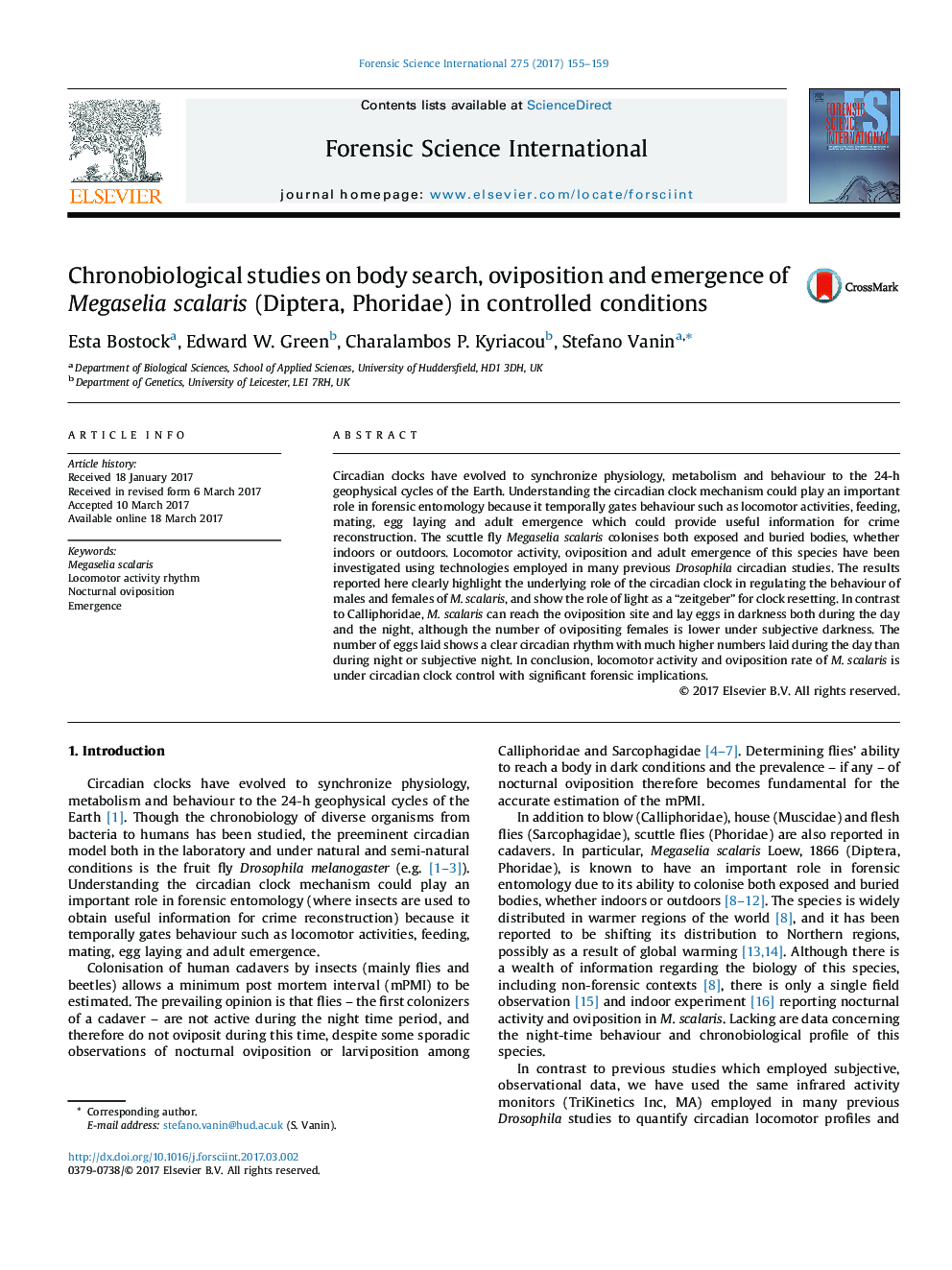| کد مقاله | کد نشریه | سال انتشار | مقاله انگلیسی | نسخه تمام متن |
|---|---|---|---|---|
| 6462346 | 1421975 | 2017 | 5 صفحه PDF | دانلود رایگان |
- Understanding the circadian clock mechanism play an key role in forensic entomology.
- Megaselia scalaris colonises both exposed and buried bodies, indoors or outdoors.
- M. scalaris can reach the oviposition site and lay eggs in darkness.
- Locomotor activity of M. scalaris is under circadian clock control for both sexes.
- N of eggs laid shows a clear circadian rhythm, higher numbers laid during the day.
Circadian clocks have evolved to synchronize physiology, metabolism and behaviour to the 24-h geophysical cycles of the Earth. Understanding the circadian clock mechanism could play an important role in forensic entomology because it temporally gates behaviour such as locomotor activities, feeding, mating, egg laying and adult emergence which could provide useful information for crime reconstruction. The scuttle fly Megaselia scalaris colonises both exposed and buried bodies, whether indoors or outdoors. Locomotor activity, oviposition and adult emergence of this species have been investigated using technologies employed in many previous Drosophila circadian studies. The results reported here clearly highlight the underlying role of the circadian clock in regulating the behaviour of males and females of M. scalaris, and show the role of light as a “zeitgeber” for clock resetting. In contrast to Calliphoridae, M. scalaris can reach the oviposition site and lay eggs in darkness both during the day and the night, although the number of ovipositing females is lower under subjective darkness. The number of eggs laid shows a clear circadian rhythm with much higher numbers laid during the day than during night or subjective night. In conclusion, locomotor activity and oviposition rate of M. scalaris is under circadian clock control with significant forensic implications.
Journal: Forensic Science International - Volume 275, June 2017, Pages 155-159
